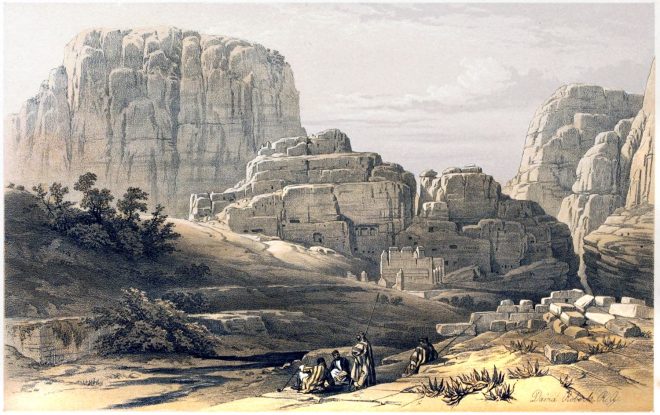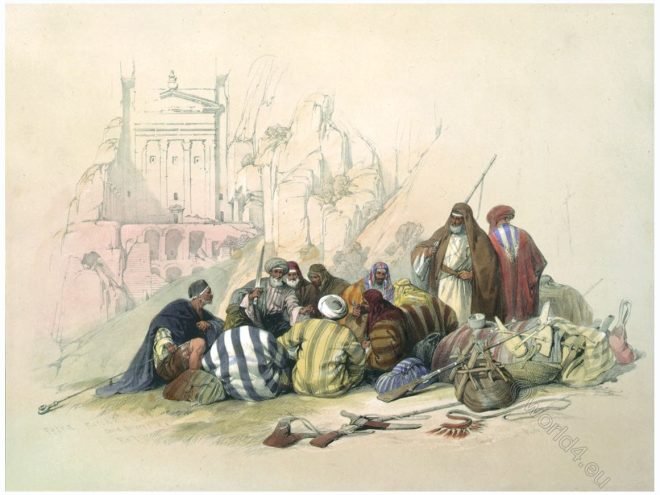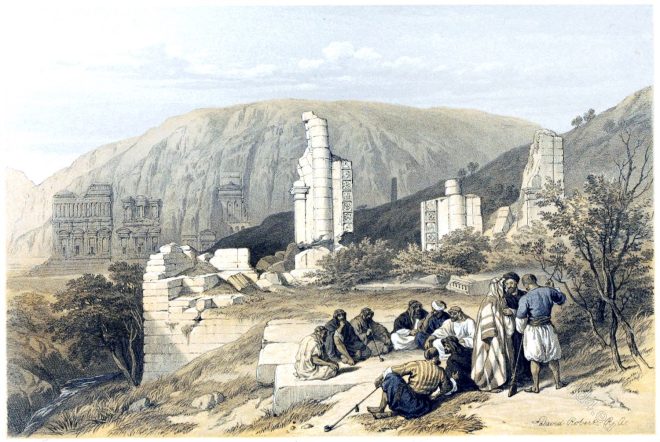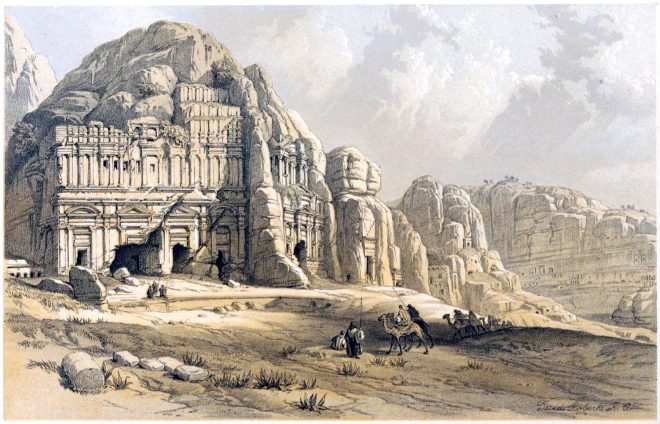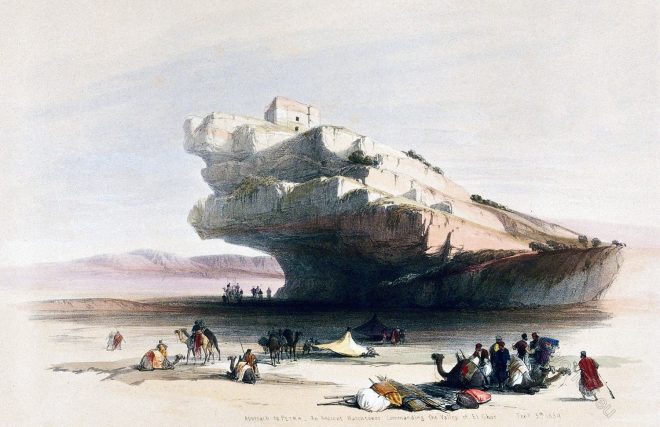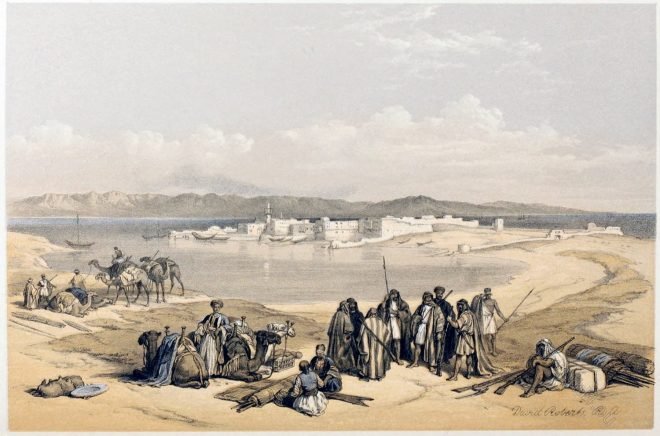It seems to have formed the approach to the Palace, or pile of building in the centre, called by the Arabs Kusr Faron (Pharaoh’s Castle).
Category: 1839
Conference of Arabs at Wady Moosa, Petra March 6th 1839.
The Engraving gives a conception of the manner in which the more serious affairs of the natives are conducted.
Remains of a triumphal arch at Petra. Jordan 1839.
The Arch-way in the Engraving, in the lower Roman style, is little more than a heap of stones.
Travellers at the tomb of Aaron, on the summit of Mount Hor, near Petra.
Among the hills in the approach to Petra, the most striking is Mount Hor, from its boldness and height, and still more, from its connexion with Scripture.
Petra, Showing the Upper or Eastern End of the Valley.
The edifice in front is of larger dimensions, and has four entrances, adorned by pilasters and ornaments in the florid style.
Triumphal arch across the ravine leading to Petra.
Near the mouth of the chasm El Sik (Bab as-Sīq, Gateway to the Siq), an Arch, at a considerable height, connects the rocks on either side.
Petra. An Ancient Watch Tower commanding the valley of El Chor.
Ancient rock-cut watch-tower overlooking the valleys of El Ghor and Akabah. February 5th, 1839.
General View of Suez. David Roberts set out from Cairo for the Holy Land.
David Roberts set out from Cairo for the Holy Land on 7 February 1839, with a small caravan including servants in Arabian and Turkish dress
Scene on the Quay of Suez (Egypt) and its future significance.
It is perhaps too early to predict the future importance of the relatively quiet quay of Suez, the direct passage between Europe and Asia through the Red Sea.
Approach to Mount Sinai. Wady Barah. Men resting their camels.
Men resting their camels and smoking by the approach to Mount Sinai. This View is taken from the Encampment at Wady Barah of the Artist and his party.

